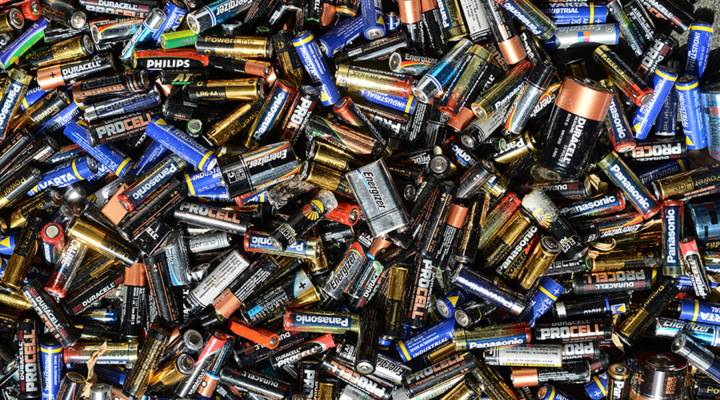
Will the U.S. invent the next generation of batteries?
Will the U.S. invent the next generation of batteries?

Developing long-lasting, powerful batteries is no easy task. And it takes a lot of money to experiment with energy technology. President Donald Trump’s proposed 2018 budget would make major cuts to battery research. Those programs generally enjoy bipartisan support, so the cuts might not go through. But the potential lack of funding could open the door for other countries to create better batteries before the U.S. does.
Kristin Persson is developing new battery technology as a staff scientist at Lawrence Berkeley National Laboratory, which is funded by the Department of Energy. She talked with Marketplace Tech host Molly Wood about the key players in the battery industry. Below is an edited portion of their conversation.
Molly Wood: Who else is in the battery race?
Kristin Persson: It’s been led by Asia since Sony commercialized the first lithium-ion battery in the 1990s. I would say that a lot of the material development has been coming from the U.S. And even though the first prototype lithium-ion battery was made here in the U.S., the industry just didn’t pick it up fast enough. So I think that’s been realized. And there are quite a few startups in the U.S. trying to come up with beyond lithium ion. I just hope they’ll get the support they need.
Wood: What companies are leading the way? We keep hearing that Tesla is a big leader in battery technology. What’s the breakthrough that Tesla has managed to accomplish?
Persson: So Tesla is, I think, more about doing the same technology better, faster. When they implemented the first batteries in their cars, they actually bought consumer batteries, commodity batteries from the portable electronics market. And the Gigafactory is about making those batteries faster and better. There are other companies in the world that are trying to come up with new chemistry, new materials. But it’s a long road. And you’re looking at some of the larger companies like Samsung. But it’s going to take some time because even if you have something working in the lab today, the car industry wants something to test for four years before they even think about putting it in a car.
Wood: And when you say it’s far out, how far are you talking?
Persson: Well, it’s hard to predict discovery. And we are looking at discovery of new materials. Currently, there really isn’t anything that is completely working. There are a good number of prototypes. So if we compare this to the timeline of lithium ion — Stan Whittingham prototyped the first lithium-ion batteries in the 1970s here in the U.S. That was a low-energy density battery but it did work, but it was unsafe. Twenty years later, Sony commercialized the real working lithium-ion battery. So let’s say that I have a prototype of a beyond lithium-ion battery working today in the lab, which we do have a few. You’re looking at 20 years of optimizations before we’re going to see it in the marketplace.
| Lithium-ion batteries are about as good as they can get |
| Big cuts ahead for energy innovation programs |
There’s a lot happening in the world. Through it all, Marketplace is here for you.
You rely on Marketplace to break down the world’s events and tell you how it affects you in a fact-based, approachable way. We rely on your financial support to keep making that possible.
Your donation today powers the independent journalism that you rely on. For just $5/month, you can help sustain Marketplace so we can keep reporting on the things that matter to you.












